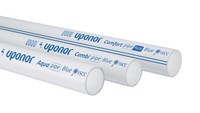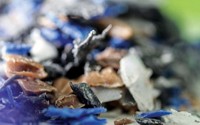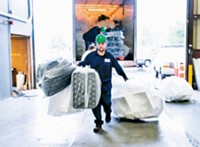Advertisement
Grab your lab coat. Let's get started
Welcome!
Welcome!
Create an account below to get 6 C&EN articles per month, receive newsletters and more - all free.
It seems this is your first time logging in online. Please enter the following information to continue.
As an ACS member you automatically get access to this site. All we need is few more details to create your reading experience.
Not you? Sign in with a different account.
Not you? Sign in with a different account.
ERROR 1
ERROR 1
ERROR 2
ERROR 2
ERROR 2
ERROR 2
ERROR 2
Password and Confirm password must match.
If you have an ACS member number, please enter it here so we can link this account to your membership. (optional)
ERROR 2
ACS values your privacy. By submitting your information, you are gaining access to C&EN and subscribing to our weekly newsletter. We use the information you provide to make your reading experience better, and we will never sell your data to third party members.
Biomaterials
The tricky task of marketing biomass-balanced plastics
A new approach to reducing fossil-fuel inputs is a tough sell
by Melody M. Bomgardner
April 20, 2018
| A version of this story appeared in
Volume 96, Issue 17

BASF and SABIC say their European petrochemical crackers can make plastic intermediates from biobased as well as fossil-derived inputs. One source of renewable hydrocarbons is the bio-naphtha and biogas coproducts of a biodiesel refinery.
Single-use plastic packaging is an aspect of modern living that can drive environmentally minded consumers up the wall. After toting groceries home in reusable shopping bags, they face the specter of polystyrene trays, polyethylene film, and multiplastic pouches that will soon go into the trash.
Both consumers and packaged goods companies would like to avoid using valuable fossil resources while still benefiting from plastic’s convenience and food protection. One way to do this is to make everyday plastics from renewable, biobased inputs.
So far, however, efforts to scale up a separate biopolymer supply chain haven’t gone very far. For example, Braskem first made ethylene from cane sugar back in 2007. Today, its plant in Triunfo, Brazil, is still the only one in the world producing the plastics building block out of a renewable raw material.
Rather than constructing manufacturing facilities designed to use only biobased feedstocks, BASF and SABIC, two major plastics producers, say they have a different approach. They say their existing petrochemical crackers, which make polymer intermediates from fossil inputs, run just fine with the addition of biobased feedstocks.
BASF and SABIC want forward-thinking customers to pay them to add pricier renewable content to their traditional input streams. What those customers are purchasing, however, is not a special kind of plastic but rather a concept that the plastics makers call biomass balance.
When a customer pays the biomass-balance premium, BASF and SABIC put some quantity of renewable feedstocks into their petrochemical crackers. The intermediates made in those plants—such as styrene, ethylene, and propylene—contain some renewable content but are chemically identical to those made solely using natural gas or naphtha.
Later, when those intermediates are converted into various plastics, the hydrocarbons from the renewable feedstocks are spread throughout. As a result of this wide distribution, it is not possible to trace the amount of renewable content to a specific plastic item. Rather, customers can make the claim, not as easily grasped, that their biomass-balanced packaging has a virtual share of renewable content.
It’s a harder claim to make on a label, but if the supply chain would embrace the concept, the renewable content of all polymers would increase over time, BASF and SABIC say.
It’s not an easy sell, acknowledges Gert Coun, SABIC’s senior innovation manager for packaging. “It’s a matter of making a transition and communicating very, very carefully this mass-balance concept,” he explains. “The first reaction of an average customer not familiar with it is to ask: ‘Can you measure the actual biocontent?’ ”
The answer is no. Instead, the sustainability claim is backed by a certificate from a third-party organization that attests to the amount of fossil feedstock that was replaced by renewable content on behalf of a customer.
For now, certified biomass-balanced packaging is available only in Europe. The German food start-up IceGuerilla selected 100% biomass-balanced Styropor polystyrene foam from BASF to ship ice cream to customers across its home country. IceGuerilla’s packaging supplier Schaumaplast is BASF’s first customer for the foam.
“It is an innovation that scores points for its environmental impact without losing the foam’s tried-and-tested technical properties,” says Bernhard Hauck, managing director at Schaumaplast.
Advertisement
Both BASF and SABIC say that while they are first pursuing the packaging market, just about any product made with common polymers can increase its green credentials.
Andreas Kicherer, BASF’s director of sustainability strategy, says the company has attracted its first building-material customers for rigid insulation made with biomass-balanced expanded polystyrene. BASF also offers nylons and polyurethanes that could be used in various durable household and industrial goods.
Another market for biomass-balanced polymers is coatings. Kicherer says certified content is available for interior house paint as well as auto refinishing paint.
A major selling point for the polymers is that they are identical to their fully fossil-based cousins. Unlike biopolymers such as polylactic acid, they don’t need to go through special testing before being used in a product, says Steven de Boer, SABIC’s sustainability leader.
They can be used as is because the biomass feedstocks—biogas and bio-naphtha—contain hydrocarbons that closely match natural gas and naphtha from petroleum refineries.
De Boer says there isn’t enough supply yet to run a petrochemical plant only on biomass feedstocks. One supplier, Finland’s Neste, produces biogas and bio-naphtha as side streams at its commercial-scale renewable diesel refinery, which upgrades waste oils and fats.
Making plastics from those streams “is a large and growing focus at Neste,” says Dayne Delahoussaye, a Neste spokesperson. He says Neste is contacting brand companies to spark demand, because unlike in the fuel market, no regulations require renewable content in plastics.
But brands are likely to run into problems convincing skeptical shoppers that their products are renewable, says Ronald Cascone, a renewable chemicals consultant at Nexant. “Customer-facing companies are pretty adamant about wanting to identify their product as renewable. You can’t say it’s renewable unless it meets the carbon-14 test.”
C&EN reached out to Ikea to gauge its enthusiasm for biomass-balanced materials. In 2016 the furniture and consumer goods purveyor partnered with Neste for help with its goal of using only recycled and renewable plastics by 2030.
Ikea is targeting “renewables which we can measure on content and recycled material with traceability, i.e. what we call true renewables,” responded Ikea spokesperson Carl Henrik Josephson in an email. “Following on from this we are currently not looking into what you refer to as the bio-balanced approach.”





Join the conversation
Contact the reporter
Submit a Letter to the Editor for publication
Engage with us on Twitter